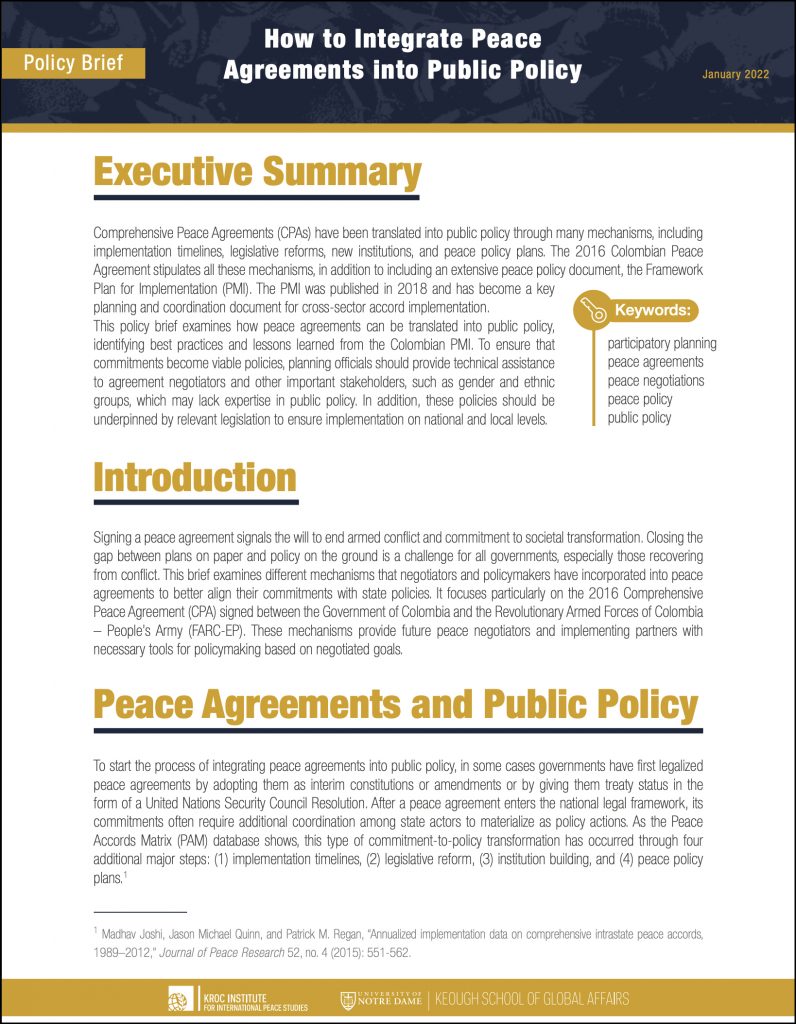How to Integrate Peace Agreements into Public Policy
Authors: Ivonne Zúñiga, Elise Ditta, Patrick McQuestion
Publication info: Kroc Institute for International Peace Studies, Keough School of Global Affairs, January 2022
Full text: Read this brief at curate.nd.edu
Abstract
Comprehensive Peace Agreements (CPAs) have been translated into public policy through many mechanisms, including implementation timelines, legislative reforms, new institutions, and peace policy plans. The 2016 Colombian Peace Agreement stipulates all these mechanisms, in addition to including an extensive peace policy document, the Framework Plan for Implementation (PMI). The PMI was published in 2018 and has become a key planning and coordination document for cross-sector accord implementation. This policy brief examines how peace agreements can be translated into public policy, identifying best practices and lessons learned from the Colombian PMI. To ensure that commitments become viable policies, planning officials should provide technical assistance to agreement negotiators and other important stakeholders, such as gender and ethnic groups, which may lack expertise in public policy. In addition, these policies should be underpinned by relevant legislation to ensure implementation on national and local levels.
Recommended citation
Zuñiga, Ivonne, Elise Ditta, and Patrick McQuestion. How to Integrate Peace Agreements into Public Policy. Peace Accords Matrix Policy Brief Series. South Bend, IN: Kroc Institute for International Peace Studies, Keough School of Global Affairs, University of Notre Dame, 2022. https://doi.org/10.7274/ng451g08w64
